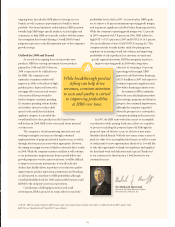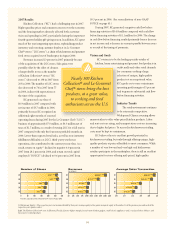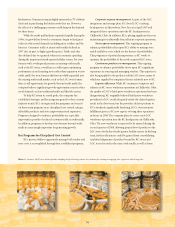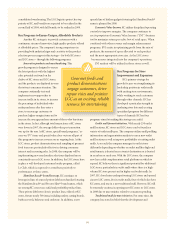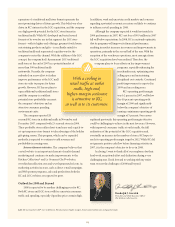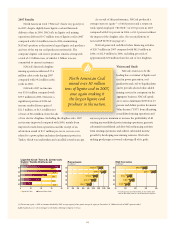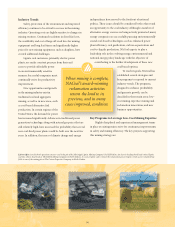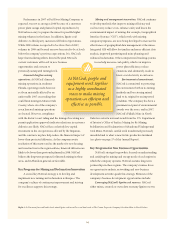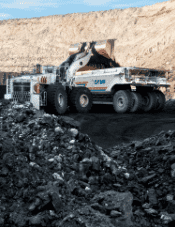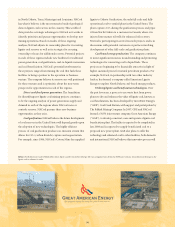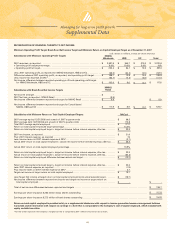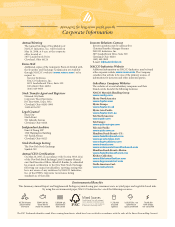Hamilton Beach 2007 Annual Report Download - page 40
Download and view the complete annual report
Please find page 40 of the 2007 Hamilton Beach annual report below. You can navigate through the pages in the report by either clicking on the pages listed below, or by using the keyword search tool below to find specific information within the annual report.
Industry Trends
Safety, protection of the environment and improved
efficiency continue to be critical to success in the mining
industry. Operating costs are highly sensitive to changes in
mining routines. Continued escalation in diesel fuel cost,
the availability and cost of large off-road tires for mining
equipment and long lead times and significantly higher
prices for new mining equipment, such as draglines, have
created additional challenges.
Lignite coal customers, primarily electric power
plants, are under constant pressure from their end
users to provide affordable power
in an environmentally sensitive
manner. Successful companies must
continually strive for productivity
improvement.
New opportunities and growth
in the mining industry exist in
traditional coal and aggregates
mining, as well as in new areas, such
as coal-based alternative fuel
production. In certain regions of the
United States, the demand for power
has increased significantly. Advances in traditional power
generation technology, along with natural gas prices that are
still relatively high, have increased the probability that several
new coal-fired power plants could be built over the next few
years. In addition, the issues of climate change and energy
independence have moved to the forefront of national
politics. These issues should be considered both a threat and
an opportunity to the coal industry. Although a number of
alternative energy sources are being actively promoted, many
energy companies are successfully pursuing environmentally
sound coal-based technologies, such as enhanced power
plant efficiency, coal gasification, carbon sequestration and
coal-to-liquids production. NACoal expects to play a
leadership role in the evolving energy, environmental and
national energy policy landscape with the objective of
contributing to the further development of these new
coal-based options.
To reach its goals, NACoal has
established several strategies and
key programs to respond to current
industry trends. The programs,
designed to enhance profitability
and generate growth, can be
classified in three main areas: low-
cost mining expertise; mining and
reclamation innovation; and new
business opportunities.
Key Programs to Leverage Low-Cost Mining Expertise
Highly disciplined and experienced management teams
in place at existing mines strive for continuous improvements
in safety and mining efficiency. The key projects supporting
this mining strategy are:
[36]
Left to right: A truck/shovel operation uncovers coal in the pit of the Mississippi Lignite Mining Company’s Red Hills Mine. An electric-loading shovel loads mined lignite
coal into a Kress haul truck at The Falkirk Mining Company in North Dakota. As soon as lignite coal is mined, the reclamation process begins. A look across reclaimed hay
fields to one of the mining pits at The Coteau Properties Company in North Dakota.
When mining is complete,
NACoal’s award-winning
reclamation activities
return the land to its
previous, and in many
cases improved, condition.



